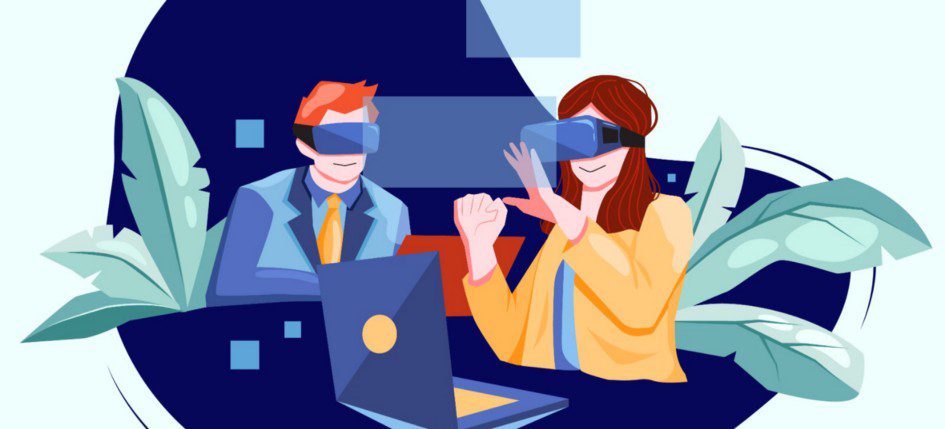What is the difference between Virtual & Augmented Reality? Virtual Reality (VR) is the use of computer simulation that allows a user to interact immersively with an artificial 3D visual. VR can generate an environment with scenes and objects that seem to be real and it is perceived through a VR headset.
If VR aims to position users into an immersive artificial world, Augmented Reality (AR) enhances the real world by layering useful or entertaining digital images over it. It offers an exciting medium and is being used for all sorts of entertainment, education and marketing purposes. An easy-to-find example of AR is the Instagram filter where there is a digital add-on show up on the screen.

While AR and VR are commonly used for entertainment and marketing purposes, they can also be used to create innovative experiences for social good. For instance, increasing awareness is a key challenge that is faced by most Social Enterprises and Non-Profit Organisations (NPO). They have to be able to draw people’s attention to the issue and make sure people recognize it as a valid problem and motivate them to work on the solution. For instance, some issues — like raising awareness toward dementia, PTSD, or autism — are not obvious to many people. And that is where the combination of Virtual and Augmented Reality can make an initiative seem relevant and relatable by letting people truly ‘experience’ the problem.

In its practice, here are some cases why AR and VR can help your social campaigns:
- It Brings an Immersive Causes Experience. The special aspect of VR and AR is in their ability to provide an immersive visualisation. For instance, one of the toughest challenges for Non-Profit Organisations is to bring some of the causes to life or to make it relatable in the public’s eyes — to drive that emotional reaction that will entice someone to contribute towards the cause. In their nature, AR and VR will allow you to bring a virtual object or concept into a reality, thus, make it easier for you to communicate your initiatives.
- It Provides Limitless Environmental Design and Innovation. Since VR and AR have developed to be more convenient and provide users with some highly-modifiable features, now you have more options on how you want to show up your initiatives in a less-conventional way.
For example, when raising an awareness campaign toward an issue, you can let the audience wear VR devices to watch a 3d video to give them some sort of first-hand experience about the issue that you bring. In this way, you can enhance the audience’s emotion with the hope that they will do certain actions afterward.
Undoubtedly, AR & VR are great ways of making social issues tangible in ways we have never experienced before. They can be used to target issues that not only have an impact at an individual level, but also at a societal level. Some Non-Profit Organisations have previously experimented with the combination of VR and AR in their social campaigns — from making interactive learning experiences, developing a device for people with special needs, to fundraising. Scroll down to find out how these organisations were able to integrate the two technologies for doing good.
3 Examples of Augmented and Virtual Reality Used for Social Impact
1. Interactive Learning for Students with Special Needs

Photo source: APSN CYS Singapore
In 2018, Singapore’s Association for Persons with Special Needs Chaoyang School (APSN CYS), launched the first Mixed Reality (MR) room during its New Campus Official Opening to provide students with special needs a multi-sensory and interactive learning experience. This innovation marked APSN as the first Special Education (SPED) school that blends virtual learning with physical learning.
The MR room consists of software that mixes tactile contact with digital interaction. This special installation is made to be highly modifiable for teachers to suit the school curriculums. Therefore, teachers can change the templates’ background, input text, videos, images, or anything that can help them.
2. The “Smart Captions Glasses” for Deaf and Hearing Impaired People
Video source: The London National Theatre
The National Theatre (NT) in London is famously known for its broad and inclusive programmes. First piloted in 2019, the National Theatre utilised a combination of VR and AR device called “The Smart Caption Glasses” to help make the technology more accessible for people who are deaf and hearing impaired. The device is a revolutionary way for people with hearing loss to enjoy performances at the National Theatre. When wearing the glasses, users can see a transcript of the dialogue and descriptions of the sound from a performance displayed on the lenses.
3. Raising Awareness Towards Mental Health Issues
Photo & video source: Alzheimer’s Research UK
Virtual Reality is a great way for Non-Profit Organisations to take storytelling to a whole new level. By immersing users into a visual context through a VR device, organizations can draw attention to advocated issues and solutions; making awareness campaigns feel more authentic and engaging than ever before.
On the launching of their awareness campaign in 2016, Alzheimer’s Research UK designed a VR app to help enhance people’s understanding of the complexities of dementia. The program aims to target the people’s common misconception that dementia only affects older people, that the only symptom is memory loss, and other false beliefs.
Collaborating with VISYON — a British virtual reality specialist — both sides successfully developed a free app to let people experience life through the eyes of a person with dementia. To make it more authentic, the app was built based on the guidance of people with dementia. The app demonstrates the different forms of the disease, and explores the emotional and psychological challenges that the patients face as they try to navigate everyday environments.
With more innovative ways to promote cause initiatives and to conduct CSR events, it is the time for Corporates and NPOs to embrace transformative technology and go to the next level.
Our goal is to help mission-driven organisations amplify their brand and CSR initiatives through a unique combination of digital marketing, events, and branding capabilities. We are more than happy to share insights and ideas with you. Talk to us about your next CSR-led events here!



